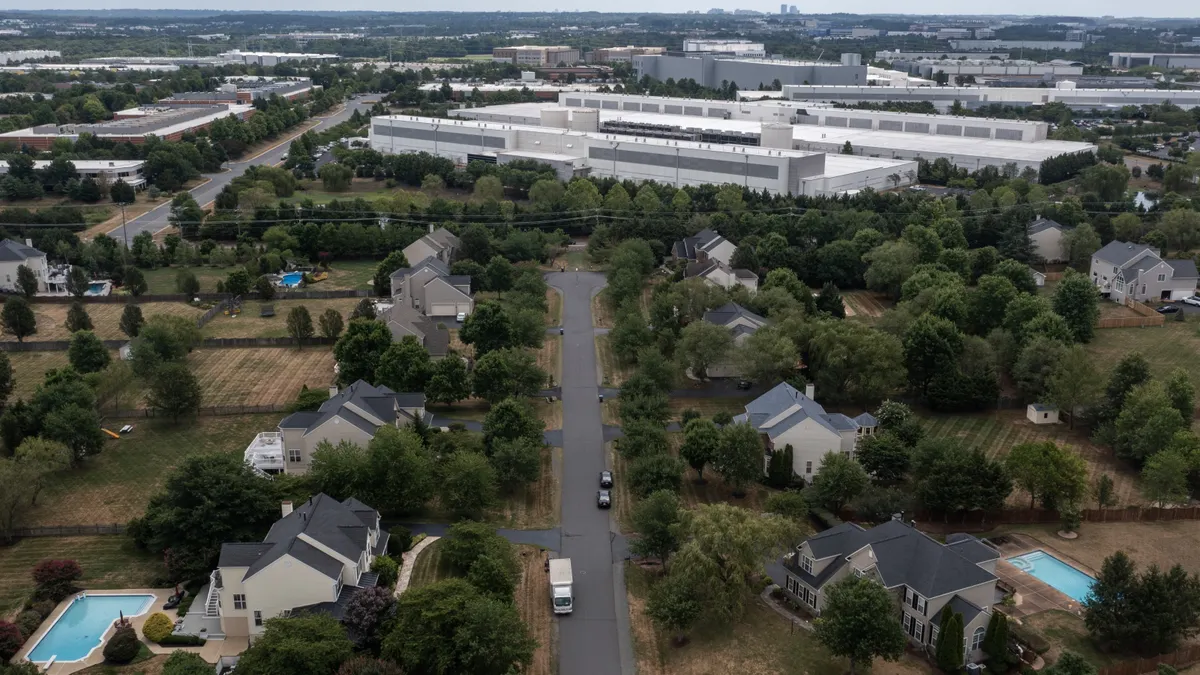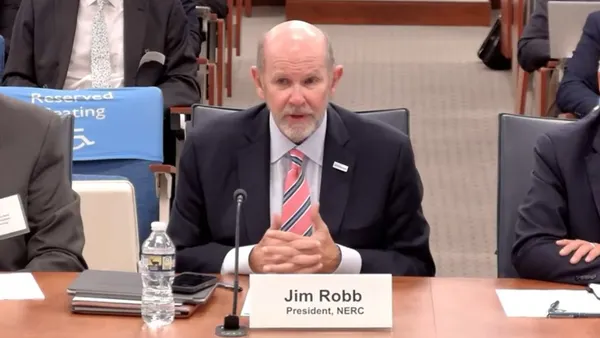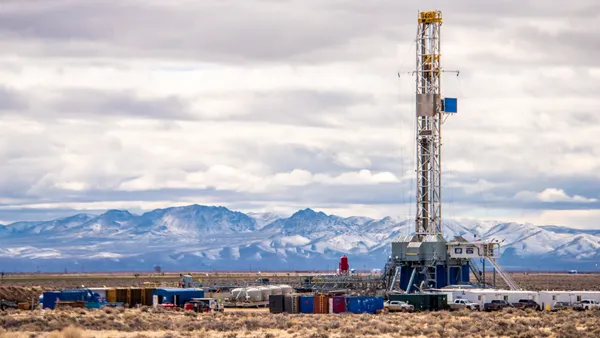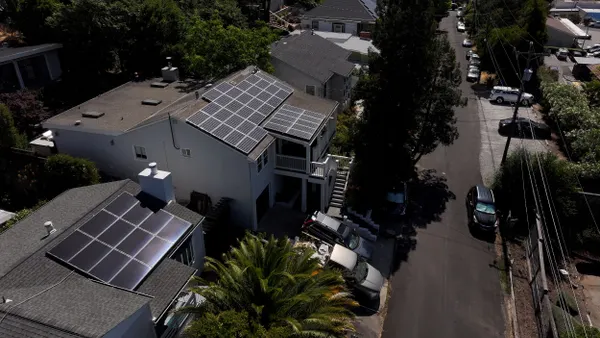Dive Brief:
- The Trump administration is planning to bail out coal and nuclear plants at risk of closure under the authority of two seldom-used federal laws, according to a memo made public Friday.
- Under the plan, the federal government would purchase electricity or generation capacity from the plants for two years using its power under Section 202 of the Federal Power Act and the Cold War-era Defense Production Act. Bloomberg first reported on the memo Thursday night.
- It remains unclear whether President Trump has signed off on the 41-page memo, but critics say guaranteeing revenue for a large number of uneconomic generators could unravel wholesale power markets. The Federal Energy Regulatory Commission rejected a similar bailout proposal from the White House earlier this year.
Dive Insight:
If approved by the president, the Trump administration's plan to buy power from struggling coal and nuclear generators would be an unprecedented federal intervention in wholesale power markets.
The plan calls for direct purchases of electricity or capacity from a list of specific coal and nuclear plants, as well as the establishment of a new "Strategic Electric Generation Reserve," to promote national security.
DOE argues the aging coal and nuclear plants are essential to national security because they, unlike natural gas plants, store fuel onsite. "Federal action is necessary to stop the further premature retirements of fuel-secure generation capacity," the memo reads.
The plant bailout would buy time for a new Department of Energy study on the vulnerabilities of the nation's electric grid, with the memo labeling the move a "prudent stop-gap measure."
DOE published a similar study last summer on the reliability of the nation's power system, but it concluded that electric reliability is not immediately at risk. The agency then proposed a similar bailout for coal and nukes at FERC, claiming they are essential for the resilience of the power grid, or the ability to recover from outages.
FERC unanimously rejected that plan in January, saying DOE did not prove the electric system is at risk, nor that saving coal and nuclear plants would improve grid reliability. The regulators opened a new investigation into grid resilience that is ongoing at the commission.
Coal and nuclear interests, however, worry that the FERC investigation will take too long, even if it concludes some plants need to be kept online. Generator FirstEnergy in March petitioned DOE to use its Section 202 emergency authority to save its fleet of struggling plants.
DOE has not yet responded to that request, but legal experts told Bloomberg that combining Section 202 action with the Defense Production Act (DPA) could help the plan stand up to legal challenges.
Section 202 of the FPA is typically used to keep generators online in times of emergency, like a natural disaster, while the DPA allows the Secretary of Energy to nationalize parts of the power sector during wartime. Labeling the at-risk plants as national security assets would likely make it more difficult for courts to throw out the plan.
Even so, any attempt to keep the aging coal and nuclear plants online would likely attract a raft of legal challenges. In May, the attorneys general from 10 states and a broad coalition of renewable energy and natural gas interests all wrote to DOE, urging it to reject the FirstEnergy request and not attempt to apply the DPA.
"[A]s broad as it is, the Defense Production Act is not broad enough to do what the supporters of these uneconomic power plants would like," the energy companies wrote. "The Defense Production Act does not allow the government to set prices. Nor does it allow the government to force market participants to buy products or services they do not wish to buy."
Critics of DOE's bailout proposals argue there is no grid emergency to justify keeping coal and nuclear plants online. The PJM Interconnection, where most of the at-risk plants operate, has said repeatedly that the reliability and resilience of its power mix are not at risk in the short term, as has the North American Electric Reliability Corporation (NERC), the federal entity responsible for power reliability.
PJM also opened a fuel security investigation last month, stressing that it, too, is not at risk today.
"We don't think there's an emergency today," PJM CEO Andy Ott told Utility Dive. "We said that very bluntly and very publicly."
DOE, however, has argued NERC and grid operators may not have "the visibility or the proper information to determine if something is a national security issue."
"NERC and the RTOs are responsible to run systems reliability and they have visibility of certain things," Assistant Secretary Bruce Walker told Utility Dive last month. "You might well imagine that with the various intelligence agencies we have throughout the federal government as well as the DOD and a host of others that we have different information and different responsibilities, which are clear, than the RTOs and NERC."
If DOE enacts its plan, it could threaten the functioning of wholesale power markets like those operated by PJM. When the agency floated its original bailout proposal to FERC, former regulators and grid experts told Utility Dive that providing cost recovery to so many generators could "blow up" wholesale power markets. DOE's current plan could go further than that earlier request, which only targeted PJM.
It is unclear if or when the bailout memo will be finalized by the White House. Cabinet officials are set to review it at Friday's meeting of the National Security Council, Bloomberg reports.
This post has been updated to include a link to the draft memo.













